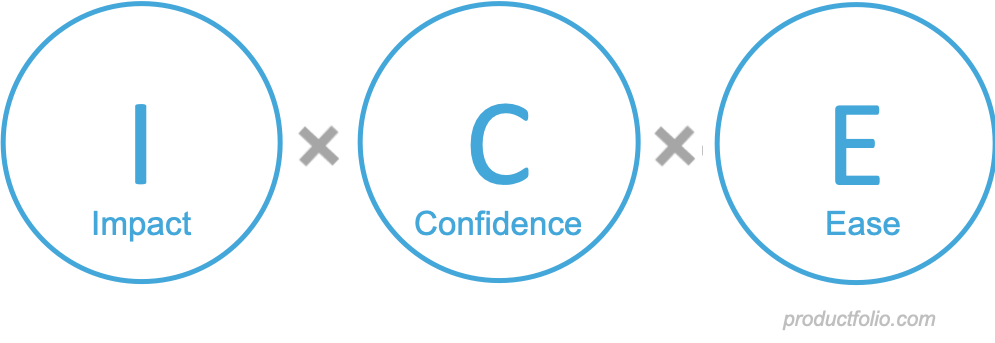What is the ICE Scoring Model?
Prioritizing features, initiatives, and rollouts are at the very heart of Product Management. Choosing the right framework at the right stage of the process is the key to being a successful Product Manager. The ICE Scoring Model is ideal for early-stage development when ideas are flowing and you want to keep the team’s momentum. Popularized by Sean Ellis, who is well-known for helping companies to achieve growth and for coining the term Growth Hacking, Ellis initially created the ICE Scoring Model to help companies grow. Over time Product Managers began adopting this framework for prioritizing features, ideas, and rollouts.

What is the ICE Scoring Model?
ICE is an acronym for Impact, Confidence, and Ease. Each word is given a score from 1 – 10, with all three numbers being added for your final ICE score. Each initiative is prioritized based on the highest numbers and the prioritization follows in consecutive order.
Impact – Determine how impactful this initiative or key feature will be. Will this new feature positively impact the user and if so, by what degree?
- 1 – Very low impact
- 2 – 5 – Minimal impact
- 6 – 8 – Measurable impact
- 8 – 10 – Significant impact
While determining the impact you want to also ask if this initiative or feature will help you to reach your overall strategic objective.
Confidence – Your confidence score can be backed up either by analytics from similar previous initiatives or by gut instinct or both. The question is, how confident are you that this feature or initiative will be well received? How risky is it to invest time and resources into this initiative?
- 1 – Very low confidence
- 2 – 5 – Minimal confidence
- 6 – 8 – Measurable confidence
- 8 – 10 – Significant confidence
While measuring confidence with your team you want to measure the known risk factors as well as gauging the unknown and potential risks associated with the initiative.
Ease – The ease category is all about the team and how much this feature will impact their workload and workflow. How easy will it be to develop, test and launch this feature?
- 1 – 2 – Long time frame (ex: 3 – 6 months)
- 3 – 5 – Significant time frame (ex: 2 months)
- 6 – 7 – Minimal time frame (ex: 1 month)
- 8 – 10 – Short time frame (ex: 2 weeks)
When determining ease think about the team’s capacity, capabilities, and the resources available.
How does the ICE Scoring Model Work?
Once you’ve created a number from 1 – 10 for each of the categories, you can multiply to get the total. For example:
Feature 1: Impact (9) x Confidence (8) x Ease (5) = 360
As you can see from the example above, Feature 1 has a higher impact score but will require more from the team to develop it. Based on the overall score, Feature 2 moves to the top of the priority list.
Benefits of using the ICE Scoring Model
Speed and simplicity make this approach popular. And quantifying a value for each of these criteria helps to make the thought process clear when reviewing it later. This framework can provide a quick way for team to prioritize initiatives and keep the momentum going. ICE can also help the team to come to a collective consensus quickly without over-analyzing, preventing analysis paralysis.
Drawbacks from using the ICE Scoring Model
One of the major drawbacks of using the ICE scoring model is that it lives in the grey area — it is subjective and the results may vary depending on who you ask and when you ask them. Results can vary depending on the day or their mood. Another downfall is that required work is likely to get a lower score and is often suggested to be removed from the scoring process.
Conclusion
The ICE Scoring Model is a great framework to use for prioritization with your team when you want to move quickly and keep the momentum going.. ICE is not meant to be perfect it’s intended to function as a minimally viable prioritization framework. If you can think of it objectively, it’s a great framework to use when you want to keep things moving and prioritize your initiatives with the team quickly.